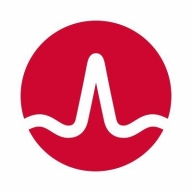

VMware Aria Operations and Opvizor compete in the virtual environment optimization and management category. VMware Aria Operations seems to have the upper hand with its comprehensive functionality and advanced analytics, while Opvizor stands out in troubleshooting and predictive analytics.
Features: VMware Aria Operations provides comprehensive monitoring across data centers, offers automated remediation to optimize performance and capacity, and supports integration with various VMware products. Opvizor emphasizes detailed performance metrics, focuses on predictive failure analysis, and enables proactive maintenance by identifying potential issues.
Ease of Deployment and Customer Service: VMware Aria Operations offers flexible deployment with comprehensive support resources. Opvizor provides simplified deployment with minimal setup time and is noted for quick and effective customer service.
Pricing and ROI: VMware Aria Operations involves higher initial costs but offers long-term ROI with its expansive features. Opvizor presents a cost-effective solution with quicker ROI due to lower upfront costs and its focus on reducing system failures. Both products provide value based on specific needs.
| Product | Market Share (%) |
|---|---|
| VMware Aria Operations | 30.0% |
| Opvizor | 2.3% |
| Other | 67.7% |


| Company Size | Count |
|---|---|
| Small Business | 63 |
| Midsize Enterprise | 62 |
| Large Enterprise | 278 |
VMware Aria Operations is a high-ranking virtualization management and cloud management tool that automates and simplifies IT management to the applications it supports. It achieves this through full-stack visibility from physical, virtual, and cloud infrastructure. The product allows users to enable self-driving IT operations management across private, hybrid, and multi-cloud environments. This is conducted with the unified operations platform that delivers continuous performance, capacity and cost optimization, and integrated compliance through artificial intelligence (AI) and machine learning (ML), and predictive analytics.
VMware Aria Operations Use Cases
VMware Aria Operations has several use cases, some of which include:
VMware Aria Operations Features
The product has various features which users can utilize. Several of the features that the 2022 version of VMware Aria Operations introduced include:
VMware Aria Operations Benefits
VMware Aria Operations brings various benefits to the organizations using it. Among them are the following:
Reviews from Real Users
Mohamed N., a tech lead VMware support engineer at a tech services company, appreciates VMware Aria Operations because it is easy to use, stable, and support is always available.
Mojtaba K., a senior system administrator at a comms service provider, values VMware Aria Operations due to the fact that its dashboards give you a glimpse of what is really going on in your virtualized environment.
We monitor all Virtualization Management Tools reviews to prevent fraudulent reviews and keep review quality high. We do not post reviews by company employees or direct competitors. We validate each review for authenticity via cross-reference with LinkedIn, and personal follow-up with the reviewer when necessary.